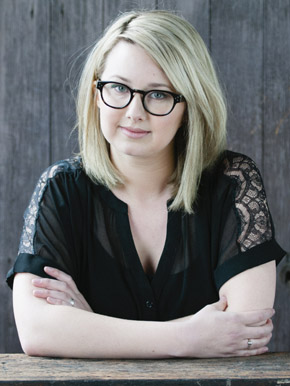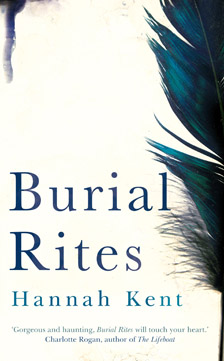Hannah Kent: From Adelaide to Icelandic noir
by Mark ReynoldsHannah Kent’s dark and impressive debut novel Burial Rites picks at the bones of a 200-year-old Icelandic story of murder, mistrust and local intrigue. Determined to become a writer since long before she left high school, her journey to success might easily have taken a different turn, she tells Mark Reynolds.
Although Iceland – and one particular story from the starkly beautiful but forbidding landscape of the north of the country – became an obsession, it could easily have been another snowy country that sparked Kent’s imagination. At the age of 17 she deferred university in her native Australia and applied to become a Rotary Exchange student. But she was at the mercy of the panel as to where she would end up.
“They get you to nominate some countries you’d like to be considered for,” she explains, “but then after the interview process, they decide where they’re going to send you. For my three countries I put down Iceland, Sweden and Switzerland. I’d never seen snow before; that was my sole rationale for choosing those countries. In the last round of the interview I was sitting in front of these three Rotarians, and one of them asked me how I would react if I was sent somewhere where it was dark a great deal in winter, and I think I surprised them with how enthusiastic I was about it. I remember saying something like, ‘Oh, it would be fantastic! I’d love to experience that.’ I have a very distinct memory of one of them raising an eyebrow and then making a mark next to my name. I ended up getting a letter saying ‘Congratulations, you’re going to Iceland for twelve months’ and then it mentioned the town that would be sponsoring me.
“I’d assumed it would be Reykjavik – but instead it was a place called Sauðárkrókur, which I found out later was right in the north. I went to look it up in the family atlas, and it wasn’t even in there! It’s this small fishing village on a northern fjord, and I left a 40+ degrees summer heat wave in Adelaide and arrived in the middle of an Icelandic winter. It was certainly unlike anything I’d ever experienced, and I don’t think I ever could have expected just how different it would be. It was hard for me the first couple of months there. I was very keen to go out and have an adventure, but I was also quite a shy person and, like with a lot of rural communities, as much as they can be inquisitive about outsiders, they’re not necessarily completely embracing from the outset. And while there wasn’t any sort of hostility, I basically struggled – alongside the homesickness, the darkness and the weather.”
In a community of around 2,500 souls, although she could easily pass for Nordic, Kent was immediately picked out as a stranger. If she began to introduce herself, she’d get the reply, “Oh, we know who you are, you’re the Australian.”
Suddenly and quite peculiarly the ground seemed to swell into hundreds of tiny hills or large mounds… they pointed to three hills close to the road in a little cluster, and told me that was the site of the last execution.”
“It was a very strange feeling of being completely conspicuous, and therefore really self-conscious – which I think you are anyway as a teenager – but also feeling very isolated within that community,” she recalls. “And I struggled with that and became really lonely. It was during these first dark, claustrophobic months that I was driven by my first host family through a place called Vatnsdalur, which is a valley quite close to the town. The landscape in the north of Iceland is really striking, intensely beautiful. There are no trees, but you have these great big sweeping pastoral valleys which are suddenly interrupted by mountain ranges. At Vatnsdalur, suddenly and quite peculiarly the ground seemed to swell into hundreds of tiny hills or large mounds, which I thought looked bizarre, almost man-made. I asked my host family what they were, and they explained that the hills had been caused by an avalanche some hundreds of years earlier. Then they pointed to three hills in particular that lay quite close to the road in a little cluster, and they told me that was the site of the last execution to be held in Iceland. I remember them telling me that it was a woman called Agnes, and that she’d been beheaded. They didn’t give me the exact date, but they did say early 1800s, and that she’d been beheaded for her role in the very brutal murder of two men as they lay sleeping. I immediately became deeply fascinated with this woman particularly, but also with the murders and the execution. And during the rest of my exchange I would continue to ask questions, and I got a few little details. Then I returned to Australia and I continued thinking about her – not in an intense ‘I must find out everything’ sort of way, but I would think of her from time to time. I would dream about this particular case, which was quite strange and irrational. I went back and did Creative Writing at university, and by the time I came to write my Honours thesis, for which I had to compose about 10,000 words of a longer creative project, I decided I was ready to write about Iceland and this story which had still gripped my imagination for so long.
It wasn’t a case of ‘Oh no, she was innocent: I must find out proof of this.’ It was very much a desire to discover something of her ambiguity. Because no one is all bad, just as no one is all good.”
“I started doing some research, to make sure I was getting historical facts right. When I translated some sources and read a little bit more information about the crime and the execution, I was really struck by the way in which Agnes was either completely absent from the historical narrative, or mentioned only really in passing; or when she was described she was always spoken about in these really unequivocal terms: that she was a monster, that she was evil, that she had planned this horrible crime from the outset, she had a really distinct goal that she really wanted this man dead. It seemed to be lacking in any kind of humanity. It felt like it had been mythologised, in a way that I thought was unfair – to the people who were made the villains, and also the people who were made out to be angels. It wasn’t a case of ‘Oh no, she was innocent: I must find out proof of this.’ It was nothing like that, it was very much a desire to discover something of her ambiguity – well at least her complexity or humanity. Because no one is all bad, just as no one is all good.”
One key to unlocking the story came when she saw the 1995 movie Agnes by Egill Eðvarðsson, which is based on the same case.
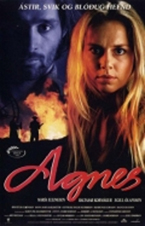 “I watched it on the last trip I made to Iceland before I started my Honours,” she says. “I remember watching the film and thinking it was very good, but that in some ways he had gone so far in the other direction of Agnes as monster as to make her a victim or an angel, and I was satisfied with neither, I thought it was two poles of the same dichotomy. They had made Natan, one of the murdered men, much more of a villain; and they had made Agnes a mother, which is historically inaccurate, so by doing so they’re kind of putting her into socially acceptable role for a woman, whereas I think one of the reasons why Agnes was so unequivocally condemned by the community is that she wasn’t readily slotted into one of those accepted female roles. She was not an innocent, nor was she the victim of an older man, nor was she a married woman or a mother, something the people could sympathise or empathise with. I thought she was made far too passive in the film as well, she was presented as having been framed. And because I wasn’t interested in finding her innocent, because I was interested in finding that grey ground, in finding that complexity, I could appreciate what they were doing, but I wanted to do something quite different. It is a good film, it’s very beautifully made, but there are certain things that are historically inaccurate in it, and you are left with the sense that Agnes is a woman who is pitted mercilessly to the rocks by fate, that she has no volition of her own, which I don’t entirely agree with.”
“I watched it on the last trip I made to Iceland before I started my Honours,” she says. “I remember watching the film and thinking it was very good, but that in some ways he had gone so far in the other direction of Agnes as monster as to make her a victim or an angel, and I was satisfied with neither, I thought it was two poles of the same dichotomy. They had made Natan, one of the murdered men, much more of a villain; and they had made Agnes a mother, which is historically inaccurate, so by doing so they’re kind of putting her into socially acceptable role for a woman, whereas I think one of the reasons why Agnes was so unequivocally condemned by the community is that she wasn’t readily slotted into one of those accepted female roles. She was not an innocent, nor was she the victim of an older man, nor was she a married woman or a mother, something the people could sympathise or empathise with. I thought she was made far too passive in the film as well, she was presented as having been framed. And because I wasn’t interested in finding her innocent, because I was interested in finding that grey ground, in finding that complexity, I could appreciate what they were doing, but I wanted to do something quite different. It is a good film, it’s very beautifully made, but there are certain things that are historically inaccurate in it, and you are left with the sense that Agnes is a woman who is pitted mercilessly to the rocks by fate, that she has no volition of her own, which I don’t entirely agree with.”
On further research trips to Iceland, and back home in Australia, she read reams of official documents from the period and an enormous amount of Icelandic literature.
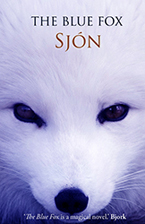 “I read the sagas – which I’d encountered previously through my love of Iceland, and also through studying Anglo-Saxon history at university. I’ve loved and read Halldór Laxness since I was an exchange student. I think he’s fantastic. And almost all the authors and academics that I read doing the research for this book were Icelandic. In terms of contemporary literature, I’ve just started reading Arnaldur Indriðason and Yrsa Sigurðardóttir, the two big crime writers. I’m really enjoying that. And Sjön is fantastic. I read him later on, I couldn’t get my hands on a copy of his work until I was in Iceland doing my archival research, and then I read Skugga-Baldur – The Blue Fox – and I was blown away by it. The next one to be translated, From the Mouth of the Whale was very different, but I still really enjoyed it. I’d really like to try reading the Icelandic version of it – though I think Victoria Cribb is a wonderful translator of his work.”
“I read the sagas – which I’d encountered previously through my love of Iceland, and also through studying Anglo-Saxon history at university. I’ve loved and read Halldór Laxness since I was an exchange student. I think he’s fantastic. And almost all the authors and academics that I read doing the research for this book were Icelandic. In terms of contemporary literature, I’ve just started reading Arnaldur Indriðason and Yrsa Sigurðardóttir, the two big crime writers. I’m really enjoying that. And Sjön is fantastic. I read him later on, I couldn’t get my hands on a copy of his work until I was in Iceland doing my archival research, and then I read Skugga-Baldur – The Blue Fox – and I was blown away by it. The next one to be translated, From the Mouth of the Whale was very different, but I still really enjoyed it. I’d really like to try reading the Icelandic version of it – though I think Victoria Cribb is a wonderful translator of his work.”
So are there other Iceland stories she’s itching to tell?
“Not at the minute, no. Maybe down the track. I would love to go back and live there, and maybe then I will. There are many other Icelandic stories that I’ve also heard. So possibly one day, but the next book is going to be set in Ireland, which is another country that has long fascinated me. It will focus much more on those themes of superstition and folklore, particularly in, again, a small rural community. I feel that I was able to play around with a little bit of folklore and superstition in Burial Rites, but not to the degree that I could have. A lot of the scenes that were cut really early on from the manuscript were about the ‘hidden people’, and they’re completely gone now, I had to cut it all. So this will be a good opportunity to return to those. Of course there are superstitions still in the book, and some of the folk stories are referred to, and actually the dreams are a big thing. All of the dreams that are in the book have been faithfully included from historical sources; I haven’t created any of them myself. But this next book will be far more about superstition; it’s quite crucial to the plot and the narrative arc of it all. I’m looking forward to getting stuck in.”
The recent promotional merry-go-round has meant that she’s had little time to write in recent months.
“Burial Rites came out in May in Australia, and then obviously it’s just come out here, and it’s about to be released in the US, so I’ve had an ongoing publicity commitment – which has been fantastic, to even have that opportunity, but it has meant that I keep on being interrupted in my research. I wish I was one of those writers who can do it on the hop, but I like to sort of bunker down and get a lot of work done. So when I finally get back home in November I’ll really go about it in a very serious, probably very intense manner. But already I’ve started doing some early reading for it, and I’ve been struck by how much easier and quicker it is when so many sources are in English! Because with this book, I’d sometimes find myself translating something for three days only to realise when I finish that it’s not useful at all.”
She has been a voracious reader of Thomas Hardy and the Russians in the past, and this is perhaps echoed in the cumulative dark seam of predetermined fate that delineates her novel.
I remember reading To the Lighthouse and being completely amazed at how Woolf was able to explore the internal life of people, but also pose the question of how can we ever make ourselves known.”
“Around the time I went to Iceland as a 17-year-old I was reading all the Russians,” she declares. “In fact I had to fight my final-year English teacher who thought Anna Karenina would be too difficult for a 17-year-old and I would’ve failed my exam, and I basically said no, I can do it, and so she finally let me read it. I was very much into Tolstoy and Dostoevsky and so on at that age. I loved Hardy, I still do. Jude the Obscure had a huge impact on me, and also later Tess of the Durbervilles, and in fact they are both texts that I’ve had to keep on going back to through my teaching. And I’m really interested, particularly with Hardy – in notions of fate and landscape. When I was in Iceland I read a lot of books that blew my mind open, and that was probably because I didn’t have great deal to do in the winter except read. And all the books that were available in English at the library were the classical ones, you know, the great modernist texts. I remember reading To the Lighthouse and being completely amazed at Woolf’s perspicacity, and also the way in which she was able to explore the internal life of people, but also pose the question of how can we ever come to understand other people, how can we ever make ourselves known. And this idea of being misrepresented and misinterpreted, that’s probably stayed with me in a great way. In terms of other authors, Margaret Atwood I think is wonderful. I like a lot of authors who were originally poets. Ron Rash is an author that I read about a year ago and adored, and immediately had to go out and read everything else he’d written. I’ve been reading a lot more contemporary literature recently. I think Emma Donahue is wonderful. Not only Room, of course, which she’s so well known for now, but her earlier work too. I encountered her through my PhD research, because I was looking at representations of murderous women in contemporary literature so, you know, her wonderful novel Slammerkin, and also Jill Dawson’s Fred & Edie.”
A still more direct influence on the book was Geraldine Brooks, who came onboard to mentor the novel.
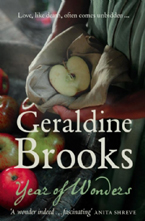 “That came through Writing Australia’s Unpublished Manuscript Award,” Kent explains “I just found out it has been discontinued, which is really sad. It was a cash prize and there was also $2,000 to go towards mentorship with an Australian author. I had the great fortune of being selected as the winner, and when they came to me and said ‘Which author do you want to work with?’ I was like, ‘Where’s the list? Who do I choose from?’ and they said just name someone and we’ll approach them. The reason I suggested Geraldine Brooks – and she was my first suggestion – is because I thought we were doing something similar in terms of incorporating research and real life events – particularly with her Year of Wonders. I thought that if my research was quite clunky in the manuscript she could help me integrate it better. But she’s based in the States so our mentorship consisted of emailing each other, probably no more than four or five times. I never received an annotated manuscript. We had a conversation around the book, which in many ways was much more useful because I think at that stage, at second draft, I was very bogged down with things at sentence level, and she helped me really take a step back and regard the broader themes of the novel, and also help me resolve some of the relationships between the characters. She never told me what to do, she just sort of posed questions to me. The best thing she ever said to me was ‘You need to let a little more light in.’ I mean, it’s a very dark book, but at that stage it was probably unbearably grim. And so with those words in mind I was then able to take what I wanted from that and rejig a little bit of the ending.”
“That came through Writing Australia’s Unpublished Manuscript Award,” Kent explains “I just found out it has been discontinued, which is really sad. It was a cash prize and there was also $2,000 to go towards mentorship with an Australian author. I had the great fortune of being selected as the winner, and when they came to me and said ‘Which author do you want to work with?’ I was like, ‘Where’s the list? Who do I choose from?’ and they said just name someone and we’ll approach them. The reason I suggested Geraldine Brooks – and she was my first suggestion – is because I thought we were doing something similar in terms of incorporating research and real life events – particularly with her Year of Wonders. I thought that if my research was quite clunky in the manuscript she could help me integrate it better. But she’s based in the States so our mentorship consisted of emailing each other, probably no more than four or five times. I never received an annotated manuscript. We had a conversation around the book, which in many ways was much more useful because I think at that stage, at second draft, I was very bogged down with things at sentence level, and she helped me really take a step back and regard the broader themes of the novel, and also help me resolve some of the relationships between the characters. She never told me what to do, she just sort of posed questions to me. The best thing she ever said to me was ‘You need to let a little more light in.’ I mean, it’s a very dark book, but at that stage it was probably unbearably grim. And so with those words in mind I was then able to take what I wanted from that and rejig a little bit of the ending.”
Finishing the book was a bigger mental and emotional release than she had ever imagined.
“The ending was written in a sort of strange state for me,” she reflects. “I was very emotionally involved in the story by that stage and I wrote it weeping, to tell you the truth, all at once. And even when I went back and edited, I again became very emotional. I wrote it in a bit of a haze, to be honest. Certain parts of the book were written under this strong creative intuition, whereas others were obviously reworked and sketched out and restructured. But the ending is almost exactly as it was first written. It’s more the scenes just before the ending of the book that were introduced; the ending was probably a little too suddenly previously.”
I’m curious to know if there any plans for a movie version of her own telling of the tale.
“I have an agent for film rights in LA and, I’m allowed to say this because I saw it was published somewhere in the US, the film rights have been optioned – not bought, but optioned – by Allison Shearmur who works with Lionsgate and produced The Hunger Games, so she’s a great person to be interested in it but we’ll see if anything happens.”
If it were to be green-lit, would she want to be involved in the writing of the script?
“No. I’m a big believer in leaving people to do what they’re best at, and I’ve never written for screen before so I think that would be catastrophic! And also I think it’s important sometimes to separate the film and the book. One is the product of an individual, and the other is the product of a huge amount of people who sometimes might have a completely different interpretation or vision for it.”
But what if they decided they wanted to make Agnes a mother to rein in her free spirit?
“Ah well, we’d have to put that in the contract!” she laughs. “And also make sure the ending remains the same. No, I think what would happen is they put you in some kind of producer or consultation role, and they’ll come to you if they have questions, and I’m quite happy to have that level of involvement. But if they make those decisions then ultimately it’s the equivalent of someone else now going and writing a novel about the same event. It’s nothing to do with me, really. You’d hope they would stay true to it, but you know things are always going to be lost because it’s just the nature of adaptation. But she gets the book, so I’m sure it’s in good hands. We shall see: watch this space.”
Burial Rites is published by Picador in hardback and eBook, and as an audiobook narrated by Morven Christie. A runaway bestseller in Australia, it has been longlisted for the 2013 Guardian First Book Award.
“A remarkable achievement… Burial Rites will stand comparison with Margaret Atwood’s Alias Grace and Peter Carey’s True History of the Kelly Gang.”
Sunday Times
Hannah Kent was born in Adelaide in 1985. She is the co-founder and publishing director of Australian literary journal Kill Your Darlings, and is completing her PhD at Flinders University, where she teaches.
hannahkentauthor.com
Mark Reynolds is a freelance editor and writer and a co-founder of Bookanista.
Listen to an interview with Hannah at Book Ends, the monthly podcast by Philippa Moore.

